Vegan Liang Pi Wheat Starch Cold Skin Noodles
Your folders
Your folders
Prep Time: 25 minutes
Cook Time: 30 minutes
Total: 55 minutes
Servings: 2
Cost: $18.95 /serving
Author : Lisa Le

Ingredients
Export 18 ingredients for grocery delivery
Instructions
Step 1
If you've made my washed flour seitan, you will probably have a large amount of starchy water to use! Allow that water to rest in the fridge for at least 4 hours for the water to separate from the starch.
Step 2
Pour off that water and use a shallow spoon to try and get as much of the water out of the separated liquid. Once you've gotten as much water out as possible, give the whole mixture a stir to incorporate the starch that has settled at the bottom.
Step 3
Bring a wok of water (about 2 inches of water) to a simmer and cover with a lid. This wok needs to be large enough for you to fit your non-stick cake pans to steam inside while floating on the water. The larger your wok, the easier it is for you to remove the pans.
Step 4
Prepare your pans with a small about of oil to prevent the noodle sheets from sticking.
Step 5
Fill your sink with cold water to cool your noodle pans so you can remove the noodle sheets easier.
Step 6
In a small pot, bring 1 cup of vegetable oil to medium heat. Once shimmering and heated through (about 350-375F/180-190C), pour over spice mixture (in a metal bowl) of ginger, cassia bark/cinnamon, star anise, bay leaves, szechuan peppercorns, and chili flakes.
Step 7
Allow to sizzle for at least 5 minutes or until you start to see some of the spices begin the burn, then carefully strain the spice mixture and allow to cool. It is VERY HOT.
Step 8
Allow to cool before transferring to a clean jar to store on the counter to use as a topping for noodles, ramen, soft tofu, whichever!
Step 9
In a mixing bowl, add 500 mL of the separated wheat starch liquid and 1/4 tsp salt. Add between 125 mL to 250 mL of water (depending on how much water you were able to remove from your liquid, and also how firm or chewy you want your noodles to turn out). The more water you add, the softer and more tender your noodles will be. The less water you add, the firmer your noodles will be.
Step 10
Traditional Liang Pi noodles tend to be firmer, I typically use a 2:1 ratio of wheat starch liquid to water, but you could make it firmer at 3:1 or 4:Start off with less liquid and adjust as you make the noodle sheets.
Step 11
Give the batter a good stir before pouring into your pan. Add about 1/3 cup of the batter to your greased/oiled nonstick pans, then balance the pan in your wok of simmering water. Cover with a lid and cook for about 3-4 minutes until the noodle sheet is cooked through.
Step 12
The noodle should be firm to the touch and not stick to your finger if you poke it, and you'll see air bubbles forming beneath the noodle sheet once it's cooked through.
Step 13
Carefully remove the pan from the wok and float on top of the sink of cold water to cool.
Step 14
Repeat steps 1-2 with the second non-stick pan.
Step 15
Your pan in the sink should be cooled by now, remove from the water, and brush the top of the sheet with a bit of vegetable oil. Use a spatula to remove the noodle sheet then set on a cutting board.
Step 16
By now, your second pan in the wok should be done cooking. Remove and transfer to the sink to cool.
Step 17
Repeat until all your batter is used up!
Step 18
Chop up the noodles to be 1/4-1/2 inch thick (to your preference).
Step 19
Mix up the sauce by combining soy sauce, Chinese black vinegar, and spicy oil.
Step 20
Top your noodles with 2-3 tbsp of the sauce, sliced cucumber, scallions and sliced seitan. Top with toasted sesame seeds (also I love adding some white pepper on top too). Enjoy!
Top similar recipes
Curated for youYour folders

 827 views
827 viewsLiang Pi: Cold skin noodles (凉皮)
redhousespice.com
5.0
(12)
20 minutes
Your folders
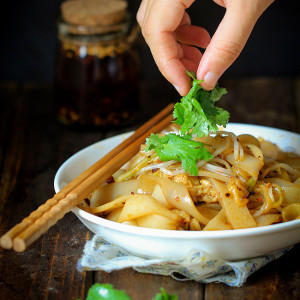
 83 views
83 viewsLiangpi—Cold Skin Noodles
chinasichuanfood.com
5.0
(1)
40 minutes
Your folders
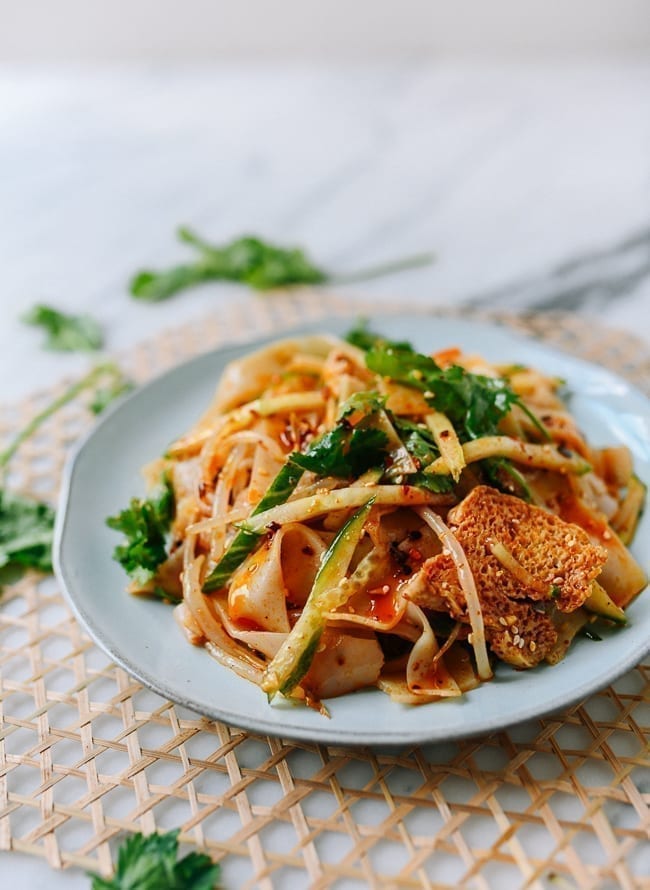
 543 views
543 viewsSpicy Cold Skin Noodles (Liangpi)
thewoksoflife.com
5.0
(1)
5 minutes
Your folders

 704 views
704 viewsTaiwanese Cold Noodles with Sesame ...
cookinginchinglish.com
5.0
(1)
5 minutes
Your folders
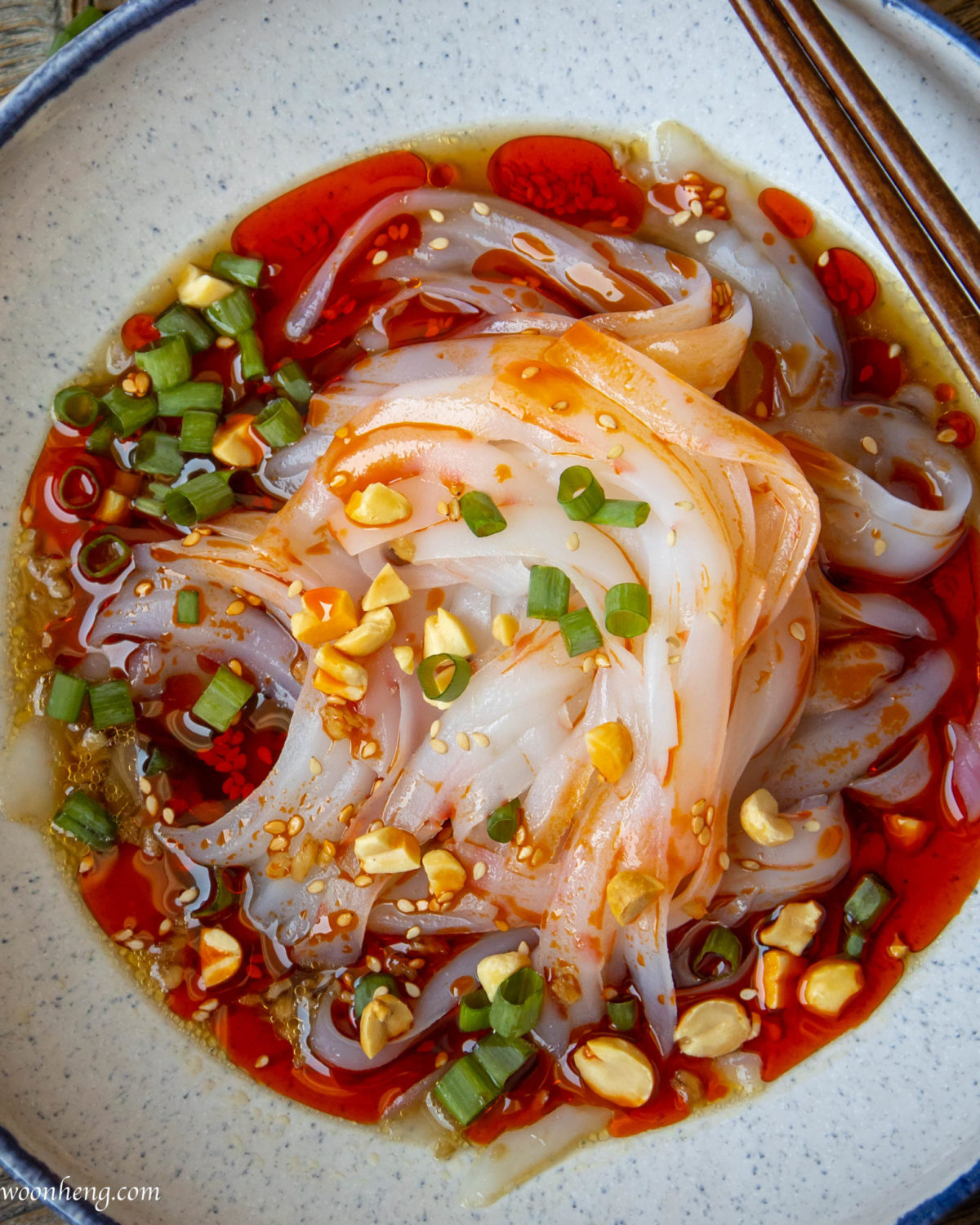
 256 views
256 viewsLiang Fen - Cold spicy jelly noodle...
woonheng.com
Your folders
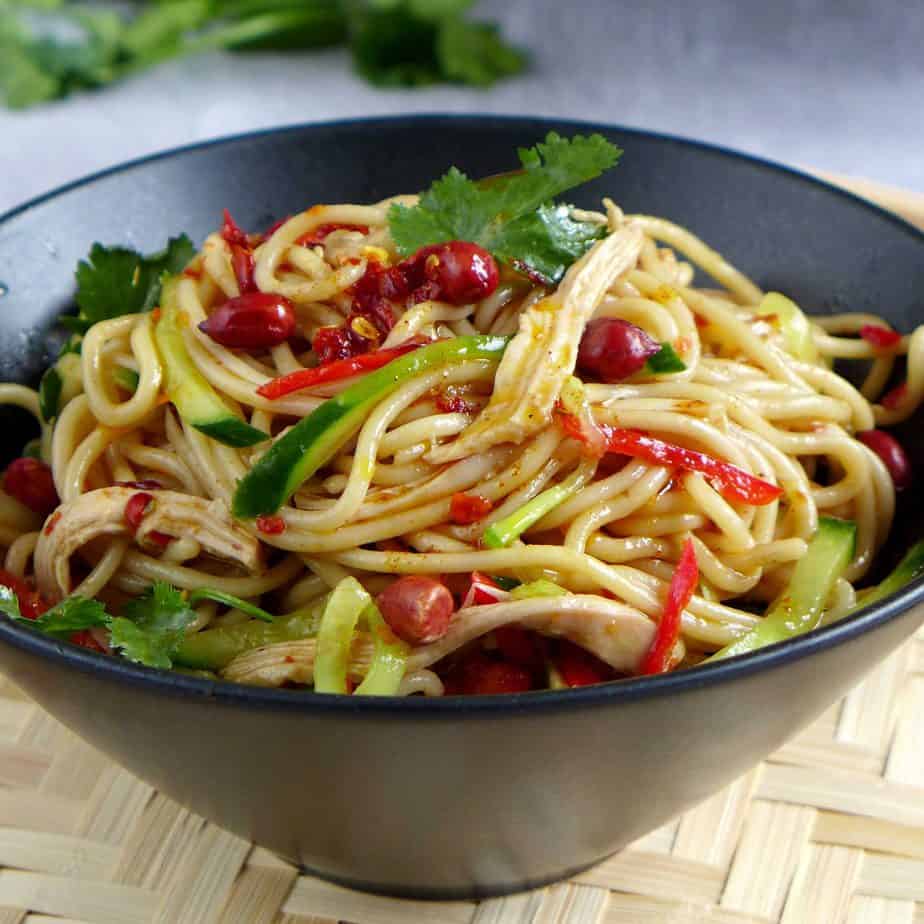
 304 views
304 viewsCold Noodles With Sichuan Dressing ...
redhousespice.com
5.0
(12)
20 minutes
Your folders

 116 views
116 viewsThe Ultimate Vegan Pumpkin Cheeseca...
seitansociety.com
5.0
(1)
Your folders
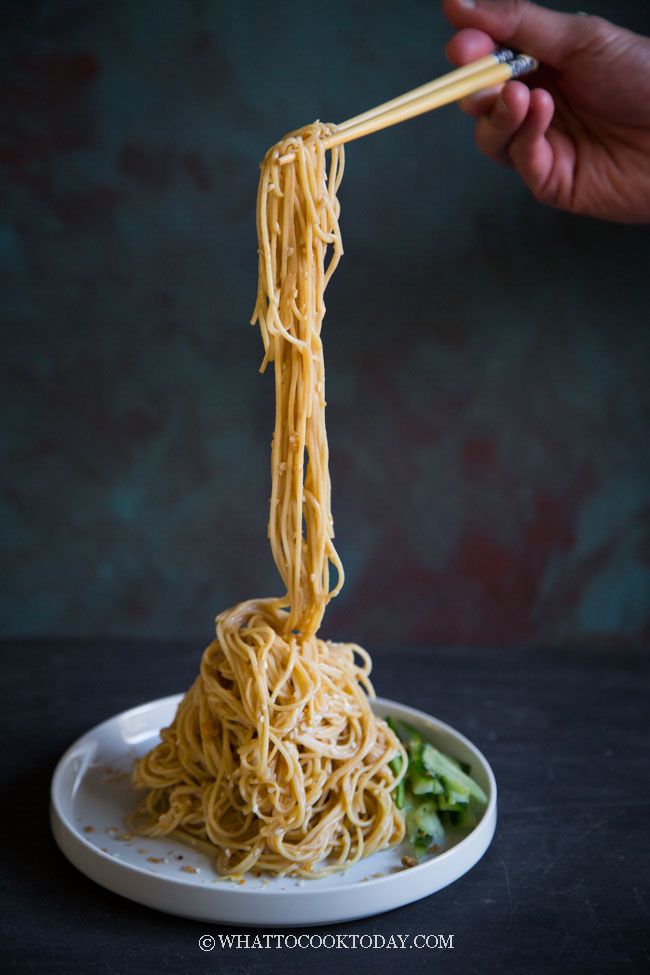
 117 views
117 viewsEasy Taiwanese Cold Noodles with Pe...
whattocooktoday.com
5.0
(10)
5 minutes
Your folders
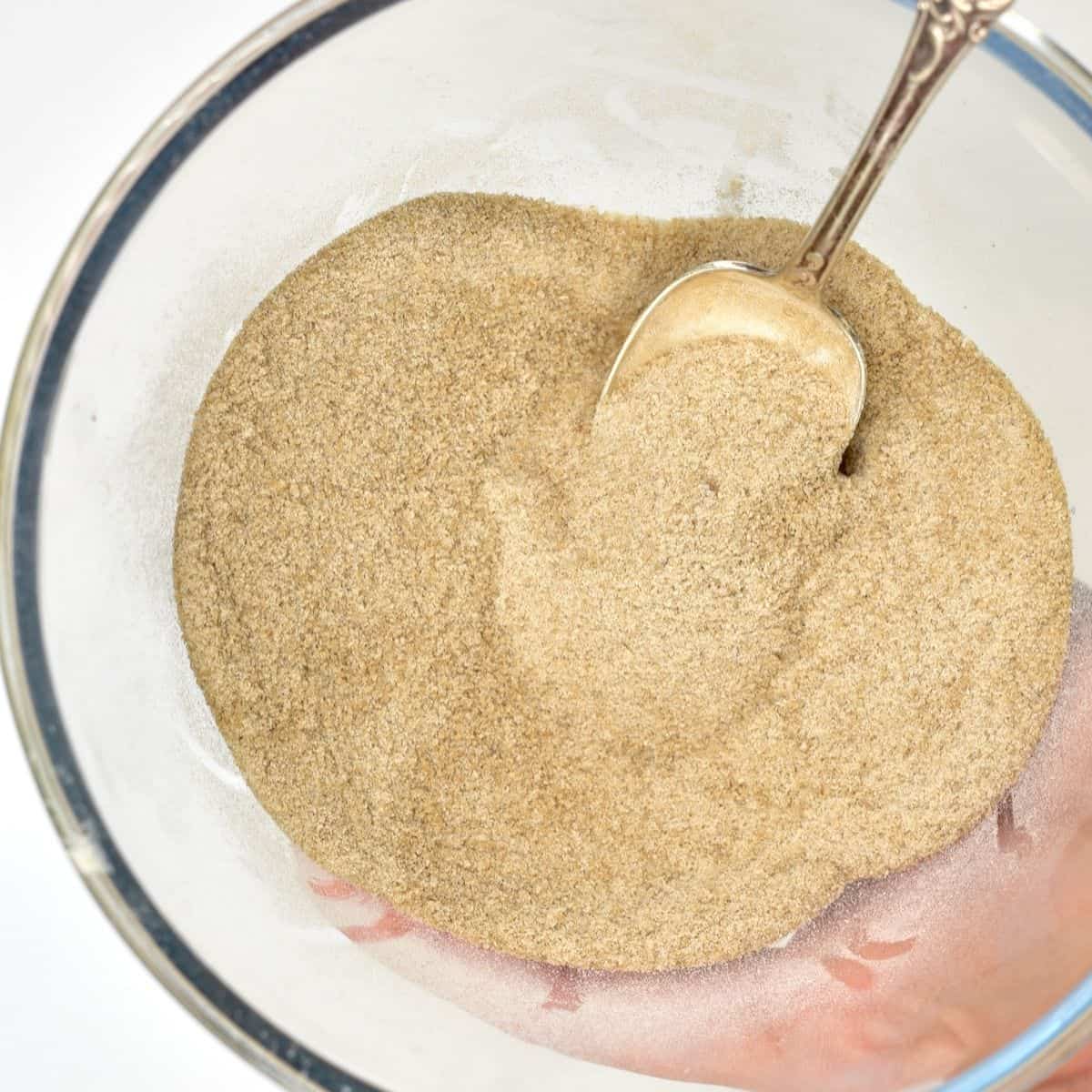
 254 views
254 viewsHow to Make Vital Wheat Gluten (and...
alphafoodie.com
4.9
(13)
Your folders

 213 views
213 viewsCold Sesame Noodles (Easy Vegan Rec...
thefoodietakesflight.com
5.0
(7)
10 minutes
Your folders

 451 views
451 viewsCold Sesame Noodles
tiffycooks.com
5 minutes
Your folders
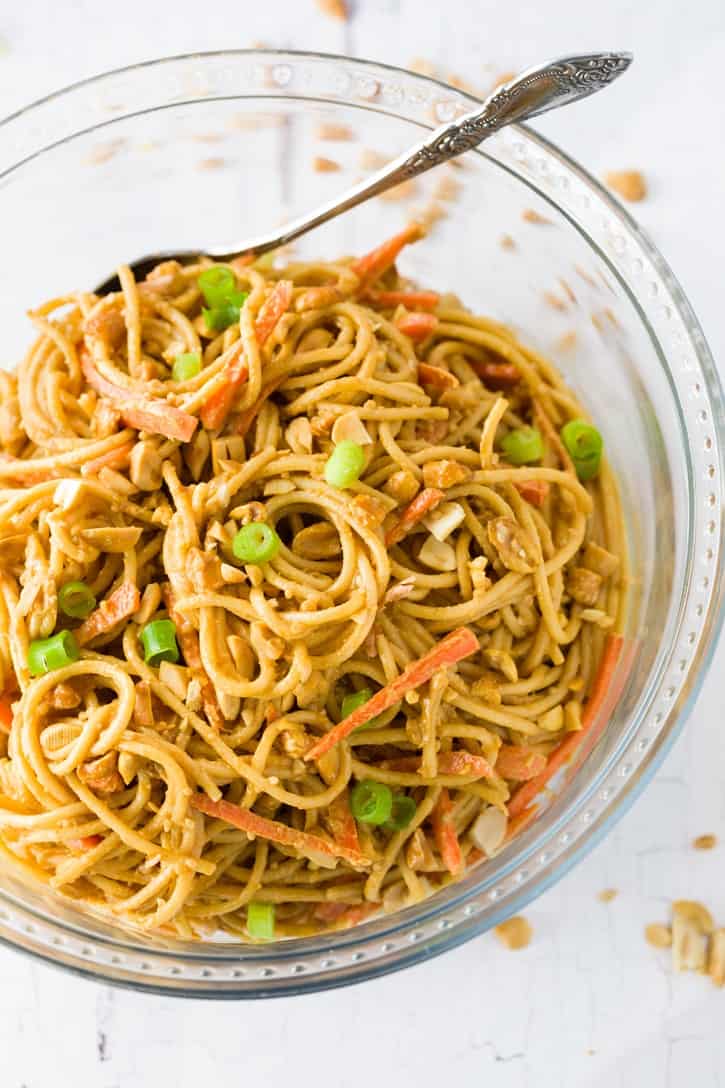
 687 views
687 viewsCold Peanut Noodles
thecozycook.com
5.0
(2)
10 minutes
Your folders

 260 views
260 viewsCold Peanut Noodles
marthastewart.com
Your folders

 310 views
310 viewsCold Sesame Noodles
marthastewart.com
3.0
(81)
Your folders
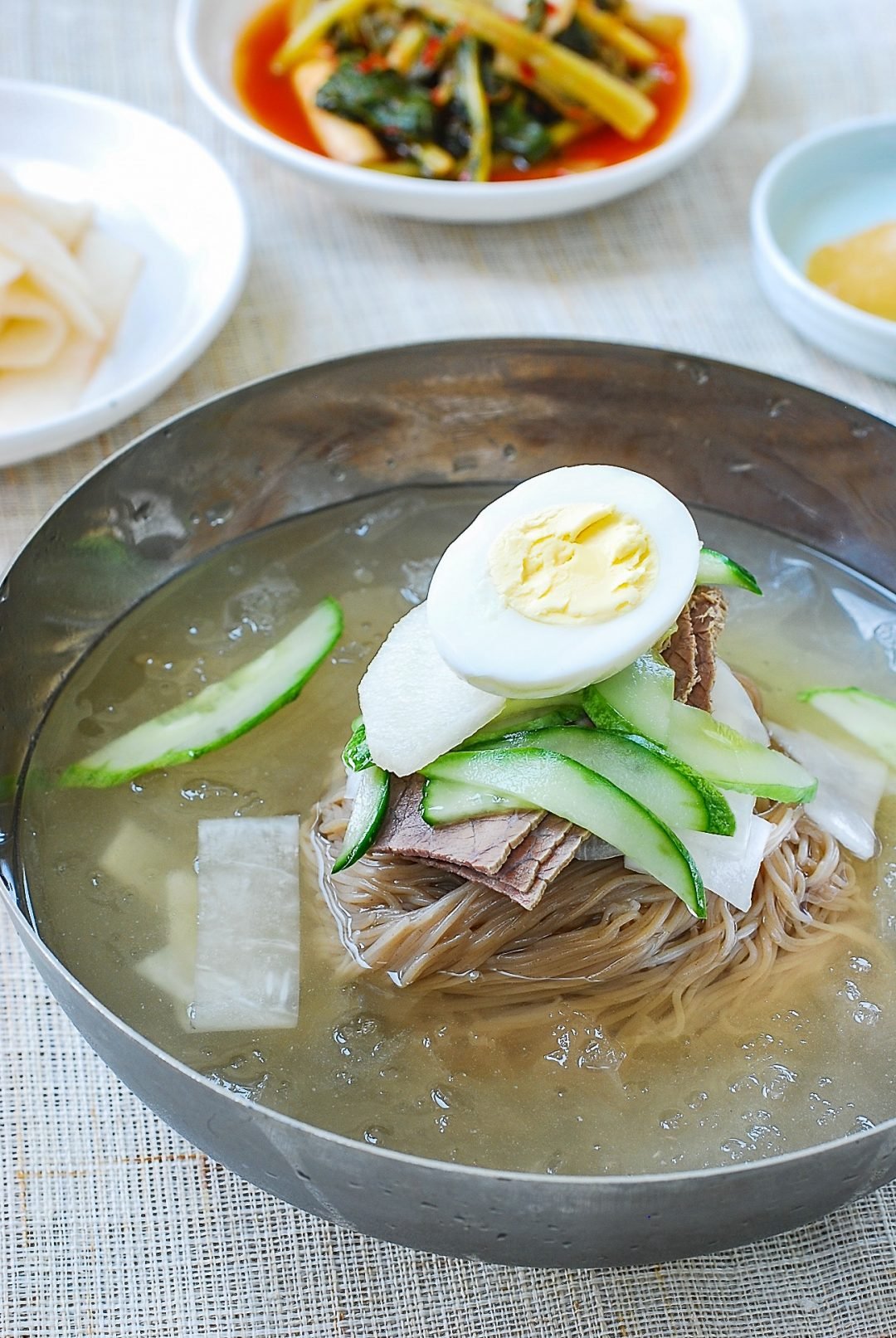
 311 views
311 viewsNaengmyeon (Cold Noodles)
koreanbapsang.com
4.6
(26)
Your folders
 151 views
151 viewsNaengmyeon (Cold Noodles)
koreanbapsang.com
Your folders

 438 views
438 viewsCold Sesame Noodles
saveur.com
Your folders
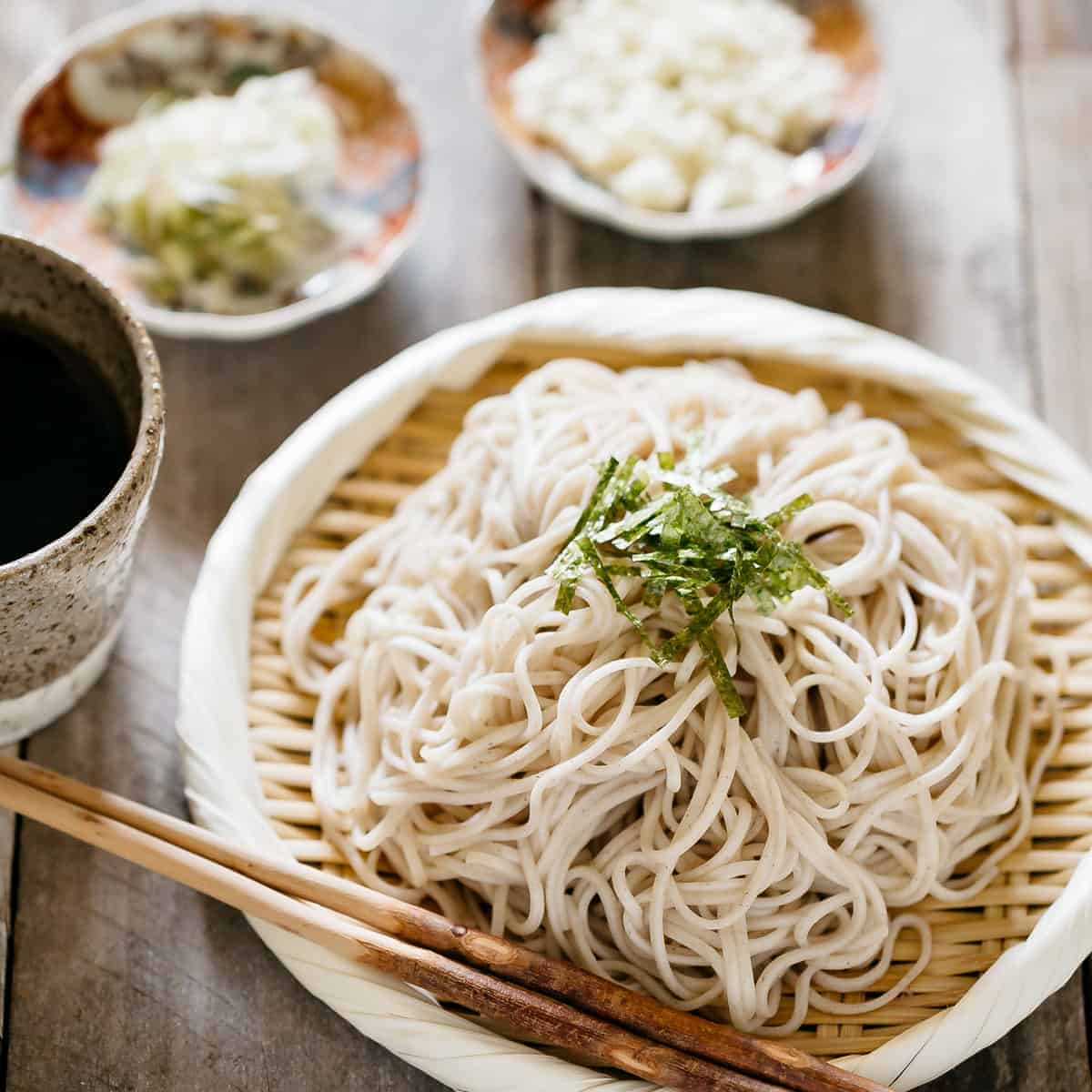
 611 views
611 viewsCold Soba Noodles
chopstickchronicles.com
5.0
(1)
3 minutes
Your folders
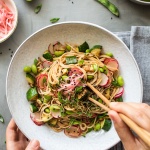
 443 views
443 viewsCold soba noodles
lazycatkitchen.com
5.0
(1)
10 minutes